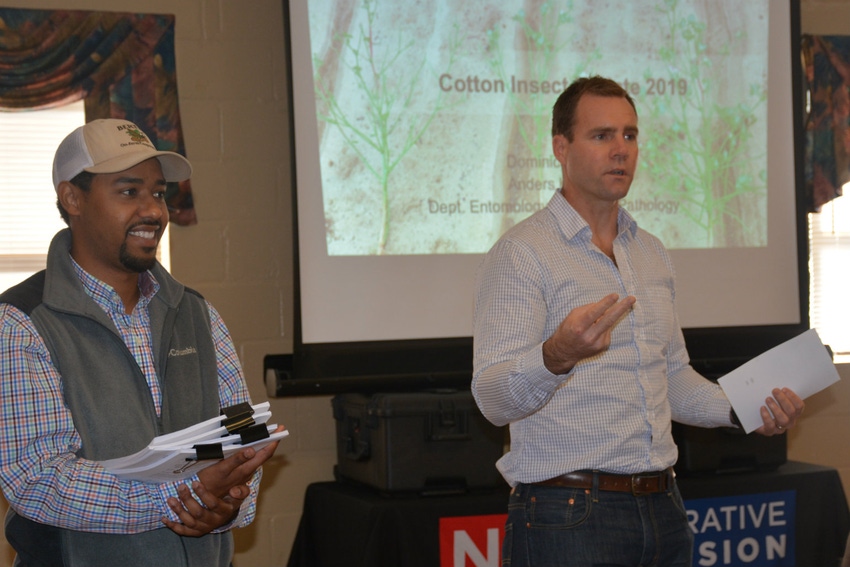
As resistance requires North Carolina cotton farmers to bring in more insecticides to control thrips, the question remains “should I spray, or should I use an in-furrow treatment?”
North Carolina State University Extension Entomologist Dr. Dominic Reisig says it depends. The challenge is that research conducted by Reisig and other North Carolina State entomologists shows that the net return of using an additional insecticide in addition to a seed treatment turned out to be both negative and positive.
“I know that’s not a very good answer. Sometimes you’re going to lose and sometimes you are going to win,” Reisig said at an Extension cotton production meeting at the Windsor Community Center in Windsor.
So how do you know if you need to use an additional insecticide? Reisig says farmers need to ask three main questions.
“The first question is have your seed treatments been working for you? Resistance will look different on one farm than it does on another, so I can’t make a blanket recommendation,” Reisig said.
“The second thing you need to ask yourself is if you can be timely with a spray? What do I mean by timely with a spray? Can you spray when you peel back those cotyledons and you see that first true leaf poking out?” Reisig said.
The biology shows that adult thrips move into the field, lay their eggs, then hatch and jump on that first true leaf and begin to cause problems. “If you have two leaves, you’re too late. You may have already lost yield “Can you make a spray at that time? It depends on what equipment you have, what the weather is and how many acres you have,” he said.
Scouting is critical and Reisig said hiring a consultant will help. If you can be timely, Reisig said spraying may be the way to go.
Farmers also need to ask if they are planting in a moderate or high-risk scenario. Reisig urges farmers to turn to the Thrips Infestation Predictor on the web for guidance. “It allows you take an individualized look at each field at each planting date and figure out where the high-risk scenarios are,” he explained.
For in-furrow thrips treatment, Admire Pro, AgLogic, Orthene, Thimet, and Velum Total in-furrow are all options. “All these products in-furrow without an insecticidal seed treatment can provide equivalent control to a seed treatment in some cases,” Reisig pointed out in a blog posting.
However, Reisig stressed that all treatments can completely flop without an insecticidal seed treatment. Because of this, North Carolina State recommends using in-furrow treatments as partners with seed treatments and encourages growers to use a seed treatment on all their cotton to ensure uniform thrips protection.
"Also, I think all those in-furrows can potentially fail, with the exception of AgLogic. This is the same active as Temik and still looks good to great under most scenarios," Reisig noted.
About the Author(s)
You May Also Like






